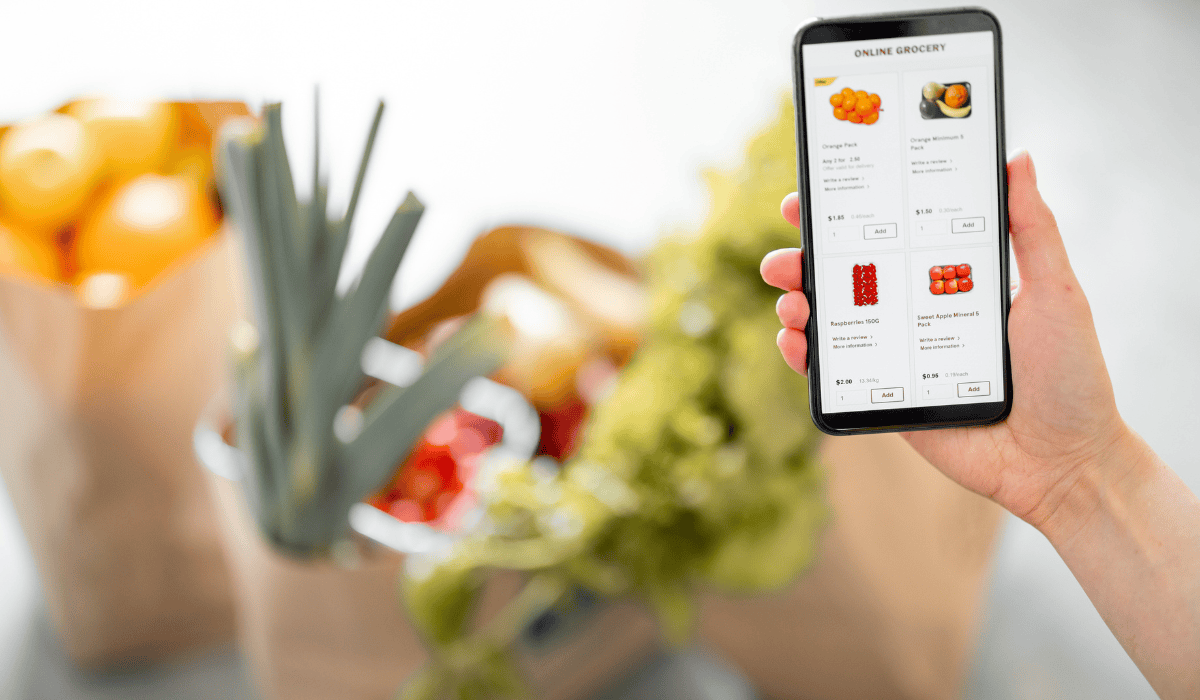
©RossHelen via Canva.com
Is E-Grocery Entering a New Phase of Growth?
U.S. online grocery growth is expected to significantly slow but still outpace in-store growth by three times over the next five years, according to Brick Meet Click’s new U.S. eGrocery Sales Forecast.
The report, sponsored by Mercatus, predicts that overall grocery sales in the U.S. will expand at a compound annual growth rate (CAGR) of 1.6% from 2023 through 2028. Growth averaged 5.6% over the five years ending in 2023, elevated by the pandemic and inflation.
Online grocery (e-grocery) is projected to increase at a CAGR of 4.5% over the next five years, and though growth has slowed, it is still more than three times faster than the 1.3% rate anticipated for in-store selling. Digital grocery sales surged by 18.4% in 2023 and 19.5% in 2022 with the inflation boost, according to Adobe’s Digital Price Index.
“Two factors are creating significant headwinds that impact our eGrocery forecast,” stated David Bishop, partner at Brick Meets Click, in a press release. “First, the market is maturing. Nearly all of the people interested in online grocery shopping have used it at least once by now. Second, even though inflation has recently fallen faster than expected, its cumulative effect continues to drive a flight-to-value behavior in grocery shopping and that will slow topline sales growth.”
Total e-grocery sales (including delivery, pickup, and ship-to-home) are projected to reach nearly $120 billion per year and account for 12.7% of U.S. grocery sales by the end of 2028, up 170 basis points versus 2023.
Other findings from the report include:
- Fast mass channel growth: As consumers seek to offset inflationary pressures, continued online share gains by the mass channel are expected to keep putting downward pressure on topline growth. Since 2021, the mass channel’s online market share, led by Walmart, has increased 620 basis points to reach 45.4% of e-grocery sales at the close of 2023.
- First-party delivery focus: Grocers are expected to emphasize first-party (1P) delivery services to better control operating expenses and the customer experience amid a slower-growth online market. It costs an average of 9% less to buy a basket of comparable groceries on 1P platforms than it does to buy from the banner on a third-party (3P) marketplace (excluding charges, fees, and tips). Additionally, efforts by 3P marketplace platforms to compete better on price are expected to add further disinflationary pressures.
- Importance of order frequency: With it now being more challenging to expand the active user base, increasing the frequency of orders is anticipated to be the most important driver for online grocery sales growth through 2028, with expectations that it will contribute 40% of e-grocery’s sales growth over the next five years.
- Pickup’s growing appeal: Through 2028, store pickup is projected to grow faster (+5.4%) than delivery (+4.4%) or ship-to-home (+2.8%). Pickup is expected to expand to nearly 47% of all online grocery sales at the end of five years.
Faster growth is forecasted by eMarketer, which predicted in January that grocery would make up 19% of U.S. ecommerce sales in 2026, up from 13.7% projected this year and surpassing apparel and accessories as the largest e-commerce category. E-grocery growth of 17.4% is projected for this year — only slightly down from 18.4% last year — with the gains driven more by increased purchase volume rather than price increases. eMarketer wrote, “Digital grocery wasn’t just a pandemic-era flash in the pan. Consumers have made a permanent shift to purchasing essential goods online.”
Discussion Questions
How do you see the drivers of e-grocery’s growth changing over the next five years?
How might investments have to be adjusted or reprioritized to continue to support online growth?
